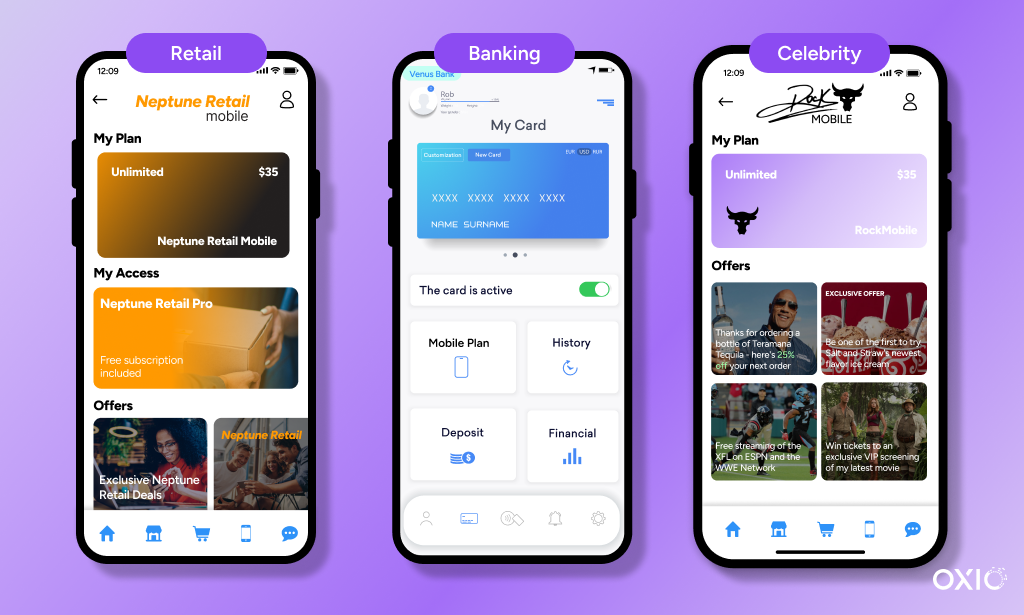The mobile industry has undergone a remarkable transformation over the past few decades. What once began as a market dominated by a few major carriers in every country, has evolved into a diverse and dynamic ecosystem that includes MVNOs, MVNEs, MVNAs, and now, the next generation: what some are calling MVNx businesses.
You might wonder what MVNx stands for – yes, it’s another telecom acronym but one with good meaning – ‘x’ represents experience. In today’s digital-first world, the future of telecom—and especially MVNOs—hinges on the experiences and value-added services they deliver. It’s no longer just about connectivity; it’s about creating meaningful, differentiated interactions that drive loyalty and growth.
By combining the strengths of mobile carriers, cloud technology companies and other industry disruptors, connectivity is being redefined—enabling non-telecom brands across diverse industries to enter the market and unlock new use cases that traditional telecom models could never have supported.
AT&T defines MVNx businesses as “non-traditional telco players trying the connectivity space for the first time – digital brands that use connectivity to endear loyalty and bring that stickiness factor.” These are brands that might not usually consider themselves to be telcos, or MVNOs, but who see the value in adding connectivity into their offering as a complimentary and compelling addition to their value proposition.
In this blog, we explore how leading telecom innovators are joining forces to drive the MVNx ecosystem forward—empowering brands to seamlessly embed connectivity into their offerings without the typical complexities associated with telecom. This newfound freedom empowers brands to focus on delivering next-generation customer experiences—delighting customers, building long-term loyalty and driving sustainable growth as they seek new ways to gain a competitive edge in today’s digital-first world.
What is an MVNx?
We define an MVNx as a non-telecom business or brand integrating mobile or connectivity services into its existing offering. These companies see telecom not just as a utility, but as a strategic, value-added extension of their core products or services—one that enables them to deliver richer, more engaging experiences for their customers. MVNx brands will come from a wide variety of verticals including fintech, retail, media, energy, OEMs, and even celebrities and influencers.
Traditional MVNOs
MVNOs started to emerge in the late 1990s and early 2000s, as mobile businesses offering wireless services without owning their own network infrastructure. Virgin Mobile and Tesco Mobile were among the early pioneers in the UK market, while TracFone Wireless and Qwest Wireless emerged in the US. Meanwhile, Australia introduced Boost Mobile to the industry.
The early MVNOs helped shape today’s prepaid and niche carrier market and while many were able to thrive, including the likes of Boost Mobile which is still operational today, many failed due to poor financial planning, lack of differentiation and difficult market conditions.
Those MVNOs that excelled did so by finding their niche and targeting them successfully, securing favorable network deals with carriers, managing costs effectively and building strong brand recognition from the outset.

The traditional partnerships MVNOs needed to develop were mainly limited to the carriers themselves, and/or MVNEs and MVNAs, and their ability to control plan creation and the overall customer experience, was limited and often fragmented. Even the most successful MVNOs were constrained by carrier-imposed limitations—restricted to predefined plan structures with little room for customization or innovation. Essentially, MVNOs-in-a-box.
While MVNOs unlocked value from existing telecom infrastructure, disrupted the market and offered customers more tailored and affordable plans, they were often heavily restricted in what they could actually control—beyond branding. As a result, many non-telecom companies steered clear of the connectivity space, viewing it as too complex, messy and cost-prohibitive to enter.
Opening doors with cloud-based connectivity
Now, with the rise of cloud-based, programmable connectivity technologies like Telecom-as-a-Service (TaaS) and the latest advancements in eSIM, the way connectivity is accessed, deployed and monetized is being completely reimagined. As a result, non-telecom companies—who once saw the telecom market as too complex and inaccessible—now have powerful, flexible options that make embedding connectivity into their existing offerings a far more attractive and strategic opportunity.
As consumer expectations continue to rapidly evolve—shaped by the ‘Amazon-effect,’ where services must be on-demand, cost-effective and diverse— businesses must adapt to stay competitive and many are now turning to connectivity as a plausible value-driven service that adds a new disruptive layer of stickiness to their product offering.

The true power of technologies like TaaS lies in their ability to let brands focus on what they do best—whether it’s retail, media, fintech, or even being a celebrity—while seamlessly managing the complexities of telecom behind the scenes. From managing the tech stack to navigating taxes and regulations, TaaS abstracts the intricacies, delivering connectivity to brands in a turnkey solution that can be used without any prior telecom knowledge or experience. The days of being an ‘MVNO-in-a-box’ are over, and businesses can now build the custom mobile service that meets the needs of their customers with complete freedom and flexibility.
The MVNx ecosystem
Telecom-as-a-Service technologies aren’t the only force pushing the industry ahead—other forward-thinking companies are also coming together to foster an open, collaborative MVNx ecosystem.
AT&T is one of the innovative carriers in the U.S. currently nurturing the concept of an MVNx ecosystem, bringing together partners that share principles around openness, innovation, scalability and true operational excellence. OXIO and AWS are just two of those partners, and leaders from each business sat down at this year’s MWC to discuss the growing MVNx ecosystem and what this means for non-telecom brands that see value in adding connectivity into their offerings.
Our collaboration with these two companies is helping to bring OXIO’s Telecom-as-a-Service solution to businesses and brands across the world. Our wholesale network and TaaS platform connects to AT&T’s RAN, while we leverage the speed, scale and security of AWS to bring brands and businesses a turnkey solution that gives them the tools and data they need to quickly and easily start embedding connectivity into their offerings.
Not forgetting data and AI
Data and AI will also be critical in driving the success of MVNx brands—unlocking deep insights into subscriber behavior that can power smarter marketing campaigns and more informed business decisions. This intelligence powers a new level of personalization, enabling brands to stand out by predicting next best offers or delivering real-time communication that enhance the customer journey.
Telecom subscriber data has typically remained siloed within carriers—dormant, unsurfaced and underutilized. When partnering with the right technology partner, this no longer has to be the case. MVNOs can tap into network-level insights, revealing which apps and social media platforms subscribers use, when they use them, and how they browse the web—unlocking a 360-degree view of the subscriber. This deeper understanding fuels more personalized and intelligent marketing campaigns that drive stronger ROI.
Data can also be used by MVNx technologies and fed through to MVNOs and MVNx brands to better understand the network, predicting when outages or disruptions might happen and preemptively resolving issues or notifying end-users to optimize the end-to-end network experience.

With its own telecom core, OXIO can deliver these deep, network-level insights directly to brands. As we continue building the global network of the future—autonomous, self-healing and intelligent—MVNOs and MVNx businesses gain unparalleled visibility into both network performance, as well as subscriber behavior and insights that are powered by OXIO’s BrandIQ solution. By combining a global telecom network with actionable subscriber data, brands can seamlessly embed connectivity while gaining the insights needed to optimize strategy, enhance decision-making and deliver truly customer-centric experiences.
MVNx now and into the future
Whether you call them MVNx, next-gen MVNOs or brand-led MVNOs, a new wave of diverse businesses is emerging—leveraging connectivity as a sticky, value-added service that opens new revenue streams, deepens customer relationships and enhances overall business strategy.
Bringing the biggest and brightest telecom and technology innovators together is giving MVNOs and non-telecom brands powerful new options when it comes to connectivity– options that simply didn’t exist before.
Think neobanks and retailers embedding connectivity directly into their finely tuned banking and shopping apps—turning everyday interactions into seamless, convenient and connected experiences. Imagine device manufacturers, like Apple, not just selling hardware, but also bundling it with the connectivity that brings those devices to life – creating a true end-to-end experience for customers. Or celebrities transforming their personal brands into mobile networks, using their massive fan bases to connect with audiences in a more direct and meaningful way. This is the future of MVNx: where connectivity becomes an extension of a brand’s identity, unlocking new revenue streams, deeper engagement and completely reimagined customer experiences.
For more information on OXIO’s Telecom-as-a-Service (TaaS) solution, get in contact today.
